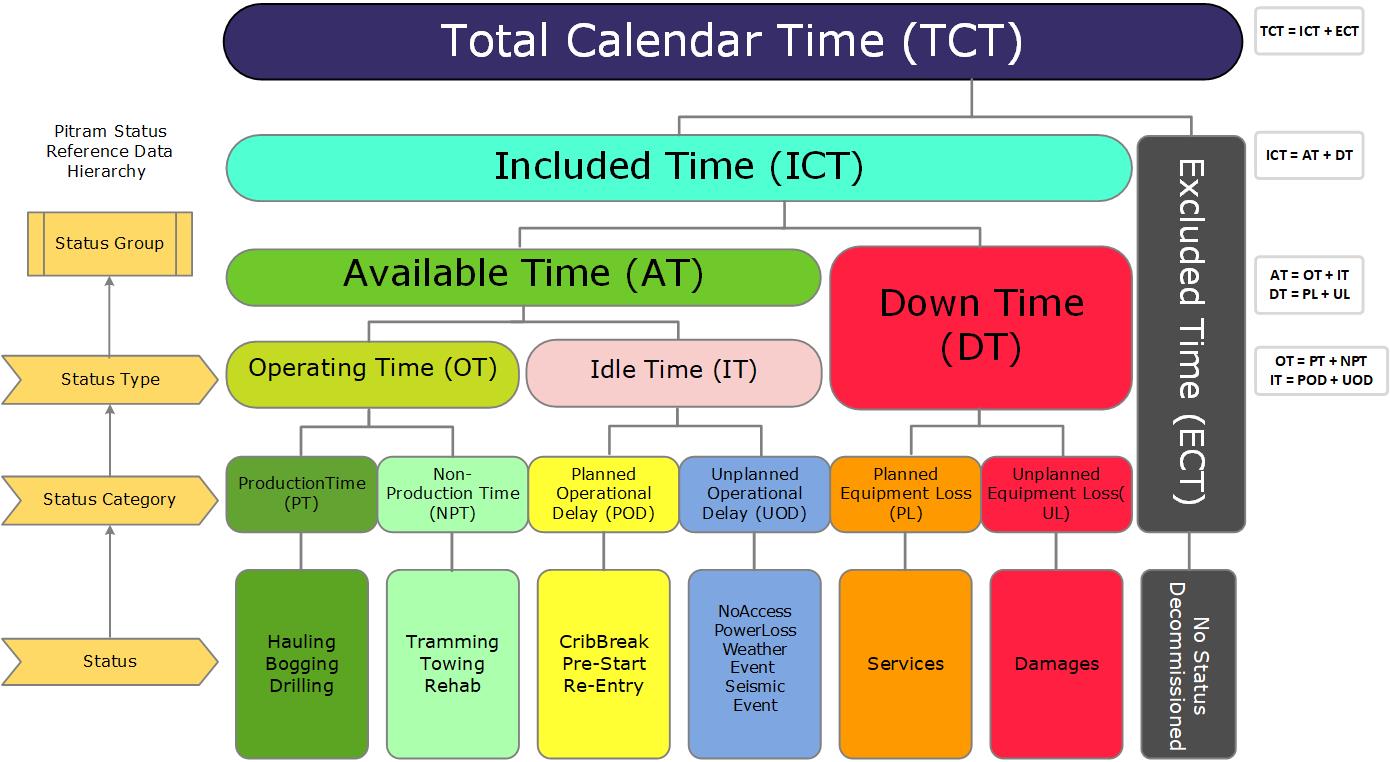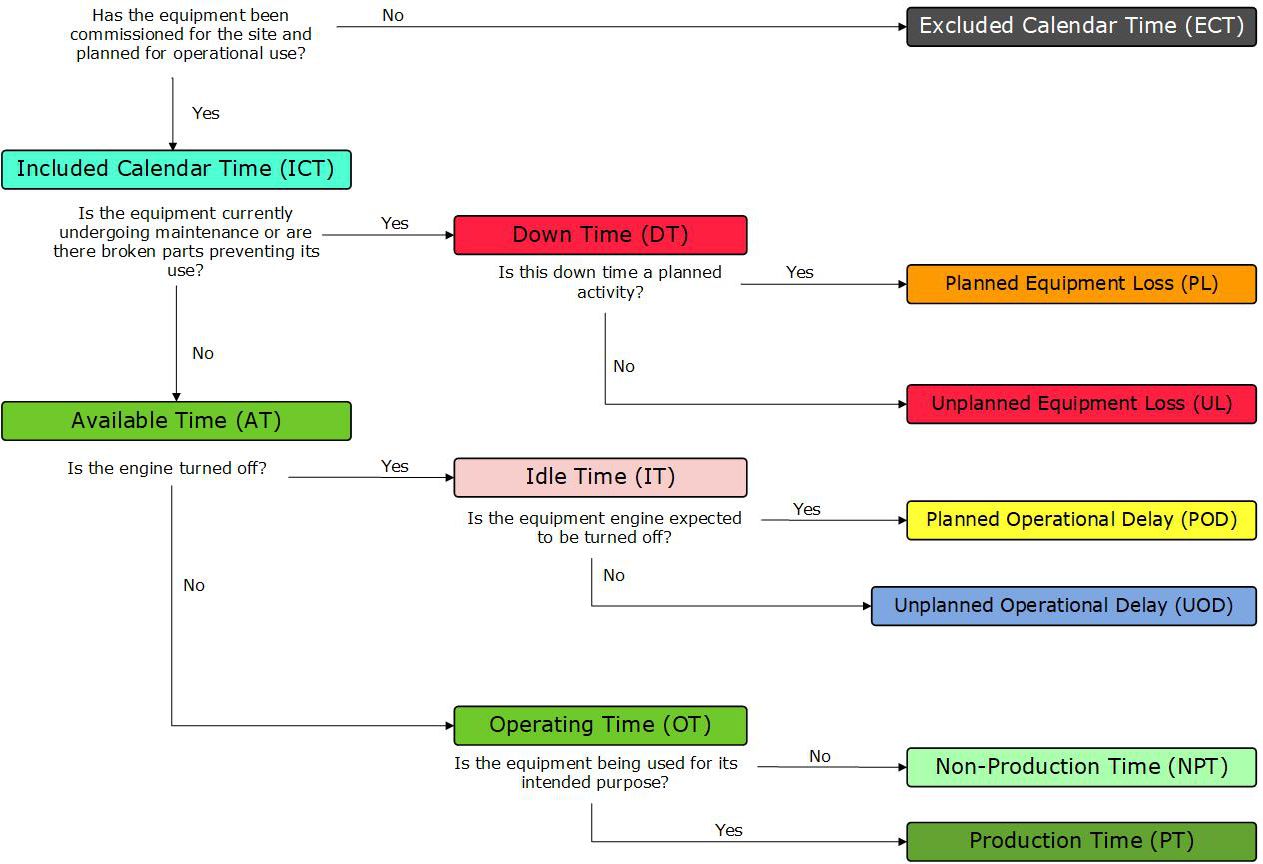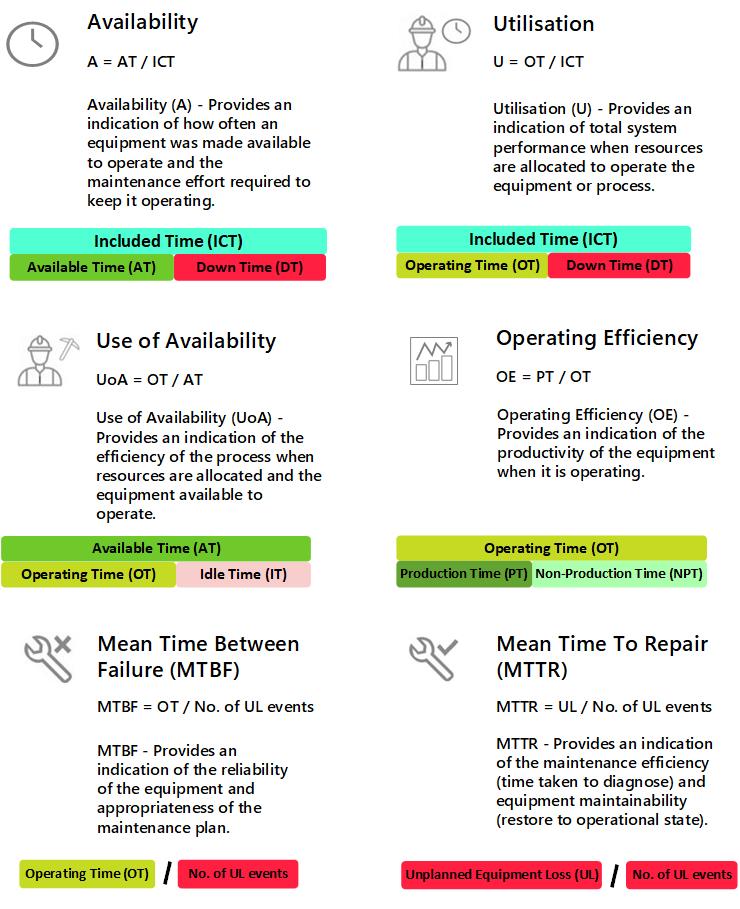Time Usage Model (TUM)
Understanding TIME builds the foundation for operational performance and excellence. Time Usage Models (TUMs) are essential tools in mining that categorize and track activities, statuses, and events, helping operations better understand, monitor, and manage their time usage. Effective time management provides the foundation for achieving operational excellence, making it crucial for mining companies to adopt a robust Time Usage Model.
TUM works by recording activities against time and reporting on performance. This allows for detailed analysis and comparison across operations. Pitram plays a key role in identifying and recording events within the TUM framework. The accuracy and completeness of this data enable mining companies to quantify key performance indicators (KPIs) and measure mining activity performance.

For the Time Usage Model to be effective:
-
All types of events, including losses and delays, must be accurately recorded.
-
Event descriptions and classifications must be consistent across time categories to allow for meaningful performance comparisons and data trending.
-
Precise start and end time stamps for each event must be captured to enable exact metrics calculations.
Time Categories and Classifications
Time categories are critical for classifying the activities, statuses, and events that occur in your operation. These classifications give insight into how time is being used, enabling the analysis required to develop actionable KPIs.

Driving Performance Improvement with KPIs
Understanding current performance is essential for identifying improvement opportunities. By using the Time Usage Model, mining operations can generate key performance indicators (KPIs) that provide a consistent way to measure and compare performance across different operational areas. This comparative analysis opens up opportunities to drive improvements in productivity and efficiency.

Data Collection: The Key to an Effective TUM
The accuracy and reliability of your Time Usage Model rely heavily on how data is collected. Pitram’s Status Reference Data must be configured properly to ensure data is consistently collected and mapped in line with TUM classifications. Consistent and precise data collection is the backbone of generating meaningful KPIs, enabling mining operations to make informed, data-driven decisions.